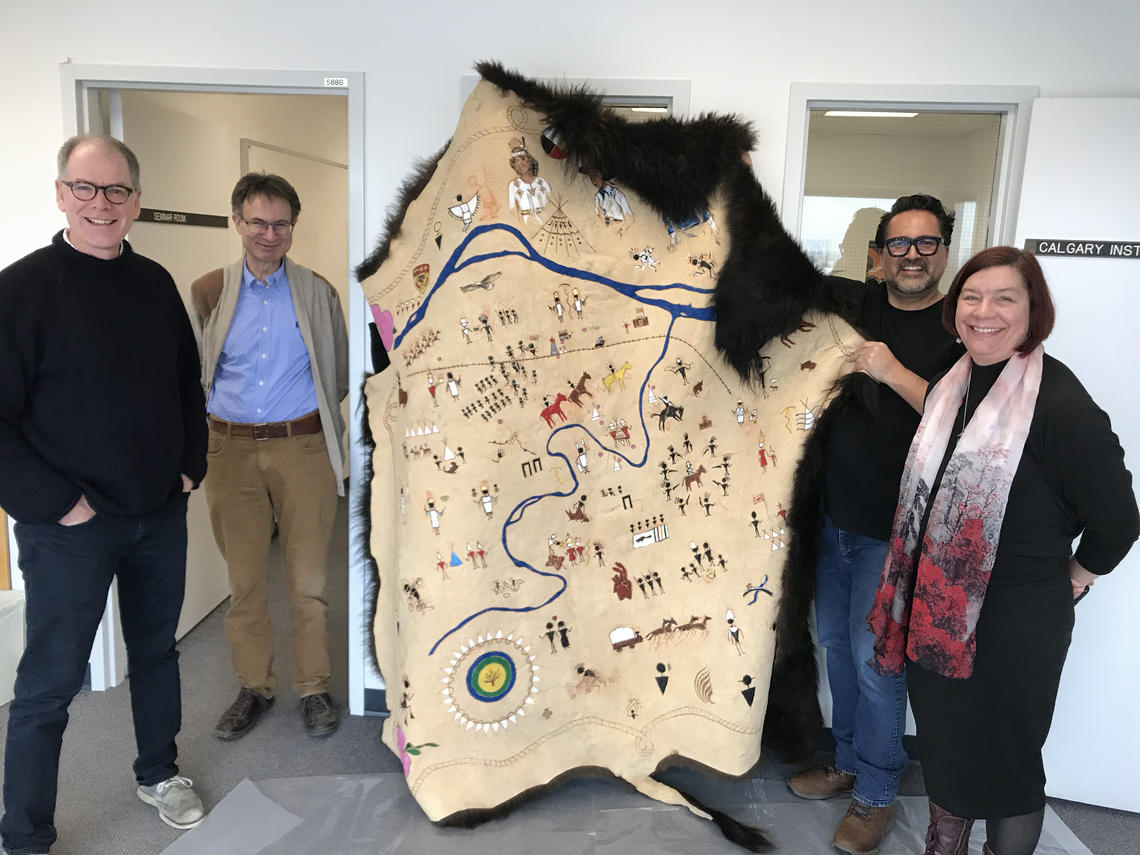Adrian Stimson, a Siksika member and Indigenous artist, has created a map that highlights stories and events from the Calgary Stampede from an Indigenous perspective.

In collaboration with the Calgary Institute for the Humanities at the University of Calgary, Stimson uses traditional Blackfoot pictographic style to narrate the Calgary Stampede history.
Stimson explained that during the early stages of the map, the idea was a “traditional, pen on paper map with my own various embellishments.”
“It dawned on me that if this is coming from a First Nations perspective, I should be using First Nations materials,” explains Stimson.

Stimson was inspired by an old traditional art practice by burning images into the bison hide; he then used leather paints to add colour to the images.
“I get the great honour of working with buffalo material because it comes from our Blackfoot history,” says Stimson.
After the mass near extinction of the buffalo population, the Blackfoot people lost their source of food, clothing and shelter, and a huge part of their spiritual practices.
“I thought about that slaughter, and I thought about that energy being released into the universe, I get the great honour as an artist to be able reach into that ether, grab that energy, bring it into myself, and create work,” said Stimson.
Bison robes were worn in particular by warriors in the tribe, the robe itself was painted with their accomplishments in battle and worn on ceremonial occasions to show their status.
“In many ways, not unlike my ancestors, the buffalo today still feeds me, and still informs me and is still a great part of my life,” sais Stimson.
He explained that “it’s important for people to get a full picture of the Calgary Stampede history” in these times of reconciliation.
“It’s important that we know the whole stories of the Calgary Stampede and not fear them in any way but to help us understand how we can do better in our lives today,” says Stimson
“When you think of colonial maps, it really is about dividing up the land,” said Stimson.
Stimson explained that this map helps decolonize and focuses more on the stories, and not necessarily the place.
“If you think about Indigenous ways of knowing and storytelling, it’s a lot more open, and it’s a lot more descriptive and a lot more exciting in so many ways,” says Stimson.
Stimson explains that stories can “help us visualize where we are and where we’re going.”
“I think the sophistication and the beauty of the culture really shines through in these kinds of projects,” says Stimson.
Stimson shares that by working on this project, it brought him closer to “his own cultural teaching ways.”
Stimson hopes that the bison robe map encourages others to think about representing their culture in their own ways.
James Ellis, Director of Institute for the Humanities at the University of Calgary, said that the Calgary stampede is “a key part of the city’s story.”
“There’s been a strong Indigenous presence at the stampede from the very beginning, which continues to this day,” he said at the unveiling of the map at the Glenbow Museum Friday night.
“Our point was not so much to de-center the history of the stampede, to tell stories from the margins, but rather to re-center the history of the stampede,” says Ellis.
Ellis explains that by re-centering the Indigenous presence in the stampede, it’s not just First Nations history, but rather a collective history.
“We all need to know these stories, so we understand this history better,” says Ellis.
Members of the public can find a print version of the map at one of Calgary’s great, independent bookstores like Shelf Life, The Next Page, or Owls Nest Books, or you can email Calgary Institute of Humanities at cih@ucalgary.ca







Comments